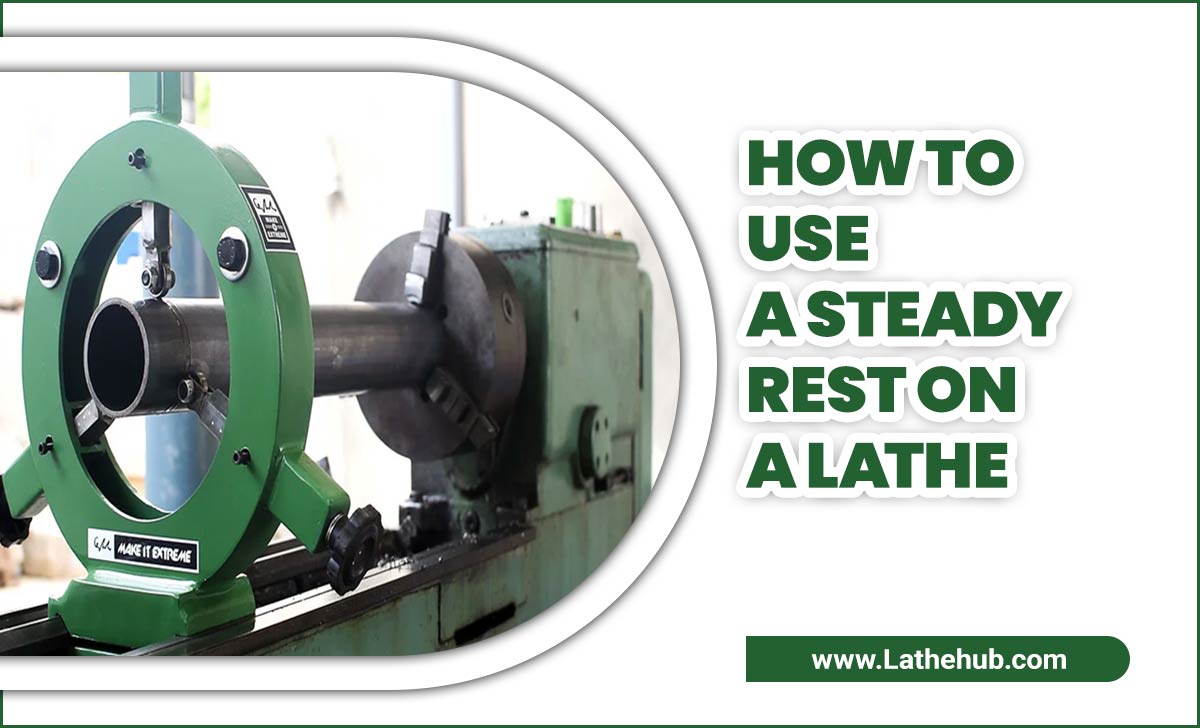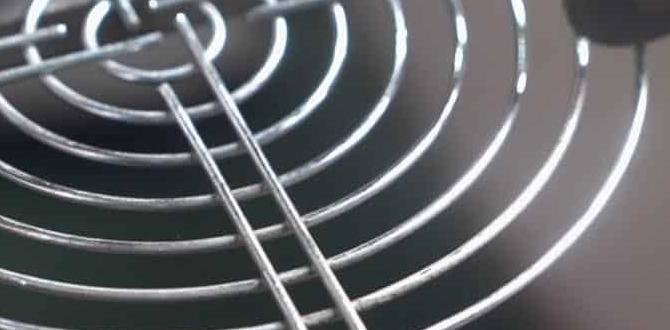Carbide end mills can achieve excellent tool life in stainless steel by using the right speeds, feeds, coolant, and cutter geometry. This guide breaks down how to maximize your stainless steel machining, ensuring your valuable carbide end mills last longer and perform better.
Machining stainless steel can feel like a wrestling match, especially when you’re trying to get your carbide end mills to last. It’s a common frustration: you invest in quality tools, but they wear out faster than you expect when working with tough materials like stainless steel. The good news is, it doesn’t have to be this way! With a few key adjustments and a solid understanding of how carbide end mills behave, you can significantly extend their lifespan and achieve smooth, reliable cuts. We’ll walk through the essential steps to get the most out of your carbide end mills, turning those frustrating cuts into predictable, successful machining sessions.
Understanding Your Carbide End Mill and Stainless Steel
Before we dive into the “how-to,” let’s quickly understand why stainless steel is challenging and what makes a carbide end mill suitable for it. Stainless steel alloys are tough, gummy, and have a tendency to work-harden. This means they get harder the more they are deformed. This toughness can quickly dull standard cutting tools, leading to poor surface finishes, increased cutting forces, and premature tool failure. Carbide, on the other hand, is an extremely hard and brittle material, making it ideal for cutting harder metals when used correctly. However, its brittleness means it can chip or break if subjected to shock or excessive heat.
The key to success lies in managing the cutting process to account for both the material’s properties and the tool’s characteristics. This involves finding the sweet spot for cutting speed, feed rate, coolant application, and even the geometric features of the end mill itself.
Why Tool Life Matters
The lifespan of your carbide end mill directly impacts your project’s cost and efficiency. Short tool life means:
- Increased Tooling Costs: Constantly replacing worn-out end mills adds up quickly.
- More Downtime: Tool changes interrupt your workflow, slowing down production.
- Poor Surface Finish: A dull end mill won’t cut cleanly, leading to rough finishes that require more post-processing, or worse, making the part unusable.
- Risk of Workpiece Damage: A failing tool can shock the workpiece, causing damage and scrapped parts.
- Machine Stress: Increased cutting forces from a dull tool put unnecessary strain on your milling machine.
Maximizing tool life ensures you get more parts from each end mill, saving you money, time, and reducing frustration. It’s about working smarter, not harder, with your machining setup. We’ll focus on achieving long tool life specifically with carbide end mills when machining stainless steel, a combination that, when done right, is very powerful.
Choosing the Right Carbide End Mill for Stainless Steel
Not all carbide end mills are created equal, especially when it comes to stainless steel. Selecting the correct end mill geometry is the first crucial step to achieving long tool life.
Key End Mill Features to Look For:
- Coatings: While uncoated carbide is an option, specific coatings are designed to improve performance in stainless steel. For example, a TiAlN (Titanium Aluminum Nitride) or AlTiN (Aluminum Titanium Nitride) coating adds a hard, heat-resistant outer layer that reduces friction and oxidation. This is vital for stainless steel, which can get hot and “gum up” the cutting edge.
- Number of Flutes: For stainless steel, two-flute and three-flute end mills are generally preferred. More flutes (like 4 or more) can lead to chip packing in softer, gummy materials like stainless steel. The extra flute space in 2 or 3-flute cutters helps evacuate chips more effectively, preventing heat buildup and reducing the risk of the tool getting loaded up.
- Helix Angle: A higher helix angle (around 30-45 degrees) is typically beneficial for stainless steel. This provides better chip evacuation and reduces cutting forces. Some specialized end mills for stainless steel might even feature variable helix designs to further combat vibration.
- Corner Radius/Chamfer: A small corner radius or a chamfer on the cutting edge can add strength and prevent chipping, especially in tougher stainless grades. This provides a more robust cutting edge that can withstand the rigors of stainless steel.
- Material: Ensure you are using a high-quality micrograin carbide. This offers a good balance of hardness and toughness.
Even for specific applications, like a “carbide end mill 3/16 inch 1/4 shank stub length for stainless steel,” understanding these features will help you select the best option within that size and style. A stub length means a shorter flute length, which generally increases rigidity and reduces chatter, both beneficial for stainless steel.
Optimizing Cutting Parameters: Speed and Feed
This is where many beginners run into trouble. Stainless steel requires slower cutting speeds and careful feed rate management compared to softer materials like aluminum or mild steel. The goal is to keep the cutting edge engaged in a chip that’s the right thickness and to avoid excessive heat buildup.
Surface Speed (SFM/SMM)
Surface speed refers to the speed at which the cutting edge of the tool is moving across the workpiece. For carbide end mills in stainless steel, you’ll typically be in the range of 200–400 Surface Feet per Minute (SFM) or 60–120 Surface Meters per Minute (SMM). This is a starting point, and the exact value depends heavily on the specific stainless alloy, the coating on your end mill, and your machine’s rigidity.
Formula to Calculate Spindle Speed (RPM):
RPM = (SFM × 3.28) / Diameter (inches)
Or
RPM = (SMM × 3.28) / Diameter (mm)
Example: For a 1/4 inch (0.25 inch) end mill at 300 SFM:
RPM = (300 × 3.28) / 0.25 = 984 / 0.25 = 3936 RPM
You would likely set your spindle to around 3900–4000 RPM.
Feed Rate
The feed rate is how fast the end mill advances into the material per revolution or per tooth. This is just as critical as spindle speed. You want a feed rate that creates a chip of appropriate thickness. Too light a feed (chip thinning) means the edge rubs rather than cuts, generating heat without effectively removing material. Too heavy a feed can overload the tool and cause breakage.
Chip Load (also known as Feed per Tooth): This is the thickness of the chip that each cutting edge removes. For carbide end mills in stainless steel, a chip load typically ranges from 0.001 to 0.004 inches per tooth, depending on the end mill diameter and the material.
Formula to Calculate Feed Rate (IPM):
Feed Rate (IPM) = Chip Load (inches/tooth) × Number of Flutes × Spindle Speed (RPM)
Example: Using the previous example (1/4 inch, 4 flutes, 4000 RPM) and a chip load of 0.0025 inches/tooth:
Feed Rate (IPM) = 0.0025 × 4 × 4000 = 40 IPM
Starting Points and Adjustments
It’s always best to start conservatively. Use lower SFM and chip load values than suggested and gradually increase them while listening to the cut and observing chip formation. If you hear a loud chattering or screaming, you might need to adjust speed or feed. If chips are very fine and dusty, you might be feeding too slowly or cutting too fast. If chips are large and stringy, or if you’re getting excessive heat, you might be feeding too fast or cutting too slow.
Table 1: General Cutting Speed & Feed Guidelines for Carbide End Mills in Stainless Steel (1/4″ Diameter)
| Parameter | Value Range (Approximate) | Notes |
|---|---|---|
| Surface Speed (SFM) | 200 – 350 | Lower for harder grades, higher for softer. |
| Chip Load/Tooth (inches) | 0.0015 – 0.0030 | Adjust based on depth of cut and rigidity. |
| Spindle Speed (RPM) @ 300 SFM | ~3800 | Calculated: (300 SFM 3.28) / 0.25″ |
| Feed Rate (IPM) @ 4 flutes, 0.002″ chip load, 3800 RPM | ~30 | Calculated: 0.002″ 4 * 3800 RPM |
| Depth of Cut (Radial) | 0.050″ – 0.250″ | Less than 50% of diameter for full slotting. |
| Depth of Cut (Axial) | 0.100″ – 0.500+” | Can be deeper for pocketing, shallower for slotting. |
When working with specific alloys like 316 stainless steel, consult manufacturer recommendations or machining data charts. For example, a general guideline for AISI 316 stainless steel with a coated carbide end mill might lean towards the lower end of the speed range and a moderate chip load.
Coolant and Lubrication: The Unsung Hero
Stainless steel generates a lot of heat during machining. Without proper cooling and lubrication, this heat is transferred to the cutting edge of the carbide end mill. This heat can cause the tool’s hardness to decrease, leading to faster wear and potential catastrophic failure (like chipping or melting). Coolant also flushes away chips, preventing them from recutting and building up on the tool.
Types of Coolant/Lubrication
- Flood Coolant: This is a continuous flow of coolant directed at the cutting zone. It’s highly effective for removing heat and flushing chips. For stainless steel, a synthetic or semi-synthetic coolant designed for ferrous metals is usually recommended. Water-based coolants offer excellent cooling, while oil-based ones offer better lubrication.
- Soluble Oil Coolants: These are concentrated oils mixed with water. They offer a good balance of cooling and lubrication. They are cost-effective and widely used.
- Mist Coolant (MQL – Minimum Quantity Lubrication): A fine spray of oil or coolant mixed with air. This is less effective at heat removal than flood coolant but good for reducing friction and lubrication. It’s often used on smaller machines or when flood coolant is not feasible.
- Lubricant Sticks or Pastes: For very light cuts or specific applications, a solid lubricant can be applied directly to the cutting edge. This is often more for lubrication than significant heat removal, but can help reduce friction and “galling” in stainless steel.
Application is Key
Regardless of the type, how you apply the coolant is crucial. The coolant needs to reach the point where the tool’s cutting edge is actually making contact with the material. For end milling, this often means directing the stream at an angle that effectively gets coolant into the flutes and under the cutting chips. High-pressure coolant systems, if your machine is equipped, can be incredibly beneficial for challenging materials like stainless steel, as they force coolant deep into the cut and help break up chips.
If you’re working with a hobbyist machine that lacks a robust coolant system, consider using a high-quality cutting fluid or paste, and apply it liberally. You may also need to take shallower cuts or slower feed rates to compensate for less aggressive cooling.
For precise machining and longer tool life in stainless steel, consider exploring advanced cooling techniques. For instance, some machinists utilize through-spindle coolant if their machine supports it, allowing direct delivery of coolant right at the cutting edge.
Machining Techniques for Stainless Steel Longevity
Good cutting parameters and coolant are essential, but how you actually perform the milling operations also plays a huge role in end mill lifespan.
Depth of Cut (Axial and Radial)
Axial Depth of Cut: This is how deep the end mill cuts into the material along its axis (how far down you plunge or how much of the tool’s length is engaged if milling a pocket floor). For stainless steel, it’s often better to take multiple shallower axial passes rather than one very deep pass. This reduces the load on the tool and allows for better chip evacuation and cooling.
Radial Depth of Cut: This is how much of the end mill’s diameter engages with the material as it moves sideways (how wide the cut is relative to the tool diameter). In slotting operations (where the radial depth of cut is 100% of the tool diameter), stainless steel is particularly demanding. It’s often advisable to step across the material in a series of narrower passes. For example, a 1/4 inch end mill might only take a 0.100″ to 0.150″ radial cut in a full slot at a time, rather than trying to cut the full 0.250″. This is often referred to as “high-efficiency milling” or “trochoidal milling,” where the tool takes shallow radial cuts and deeper axial cuts in a series of overlapping passes, generating small, manageable chips and minimizing heat buildup.
For a 3/16 inch end mill with a 1/4 inch shank, a stub length, you’ll want to absolutely leverage its rigidity. Taking full-width cuts with it is feasible if your depth of cut is shallow and your feed rates are adjusted appropriately. However, for slotting or deep pocketing, breaking it down into smaller radial steps (perhaps 0.050″-0.100″) will yield much better results and significantly extend your end mill’s life.
Chip Evacuation
As mentioned, stainless steel is prone to chip packing. This happens when chips don’t clear the cutting area and get recut, leading to excessive heat, tool wear, and potential tool breakage. Always ensure your coolant is doing its job to flush chips away. In deep cavities or slots, you might need to use peck drilling cycles or retract the tool periodically to clear chips from the hole or slot.
Workholding and Rigidity
A rigid setup is paramount. Any flex in the workpiece, fixturing, or the machine itself can lead to chatter and shock loads on the cutting edge, drastically reducing tool life. Ensure your workpiece is clamped securely, and your end mill is held firmly in a quality collet or tool holder. Avoid long, unsupported extensions of the end mill; hence, the benefit of stub-length end mills for rigidity.
Tool Path Strategy
Consider the tool path. For roughing, adaptive or high-efficiency tool paths that maintain a consistent chip load are far superior to traditional pocketing strategies which can lead to chip thinning and thickening. These strategies aim to keep the tool engaged uniformly throughout the cut.
Maintaining and Inspecting Your Carbide End Mill
Just like any tool, your carbide end mill needs attention to perform its best and last longer.
Inspection Before and After Use
Before each use:
- Visually inspect the cutting edges for any signs of chipping, dulling, or built-up edge (BUE).
- Ensure the shank is clean and free of debris for proper seating in the collet or holder.
After use:
- Clean the end mill thoroughly. Coolant residue can sometimes cause corrosion or build up contaminants.
- Re-inspect for any new damage. Small chips or wear flats can indicate future problems.
When to Replace a Carbide End Mill
Knowing when to retire an end mill is an art, but here are common indicators:
- Visible Wear Flats: If you see a noticeable shiny band on the cutting edge (a wear flat), the edge is dulling.
- Chipping: Even small chips on the cutting edge can lead to poor surface finish and further damage.
- Increased Cutting Forces: If you notice your machine struggling or the sound of the cut changing significantly, the tool may be dulling.
- Poor Surface Finish: When the finish on your parts starts to degrade, it’s a clear sign your end mill is worn.
- Built-Up Edge (BUE): Material welding onto the cutting edge and then breaking off can damage the edge and lead to poor performance.
Sharpening (A Note for Advanced Users)







